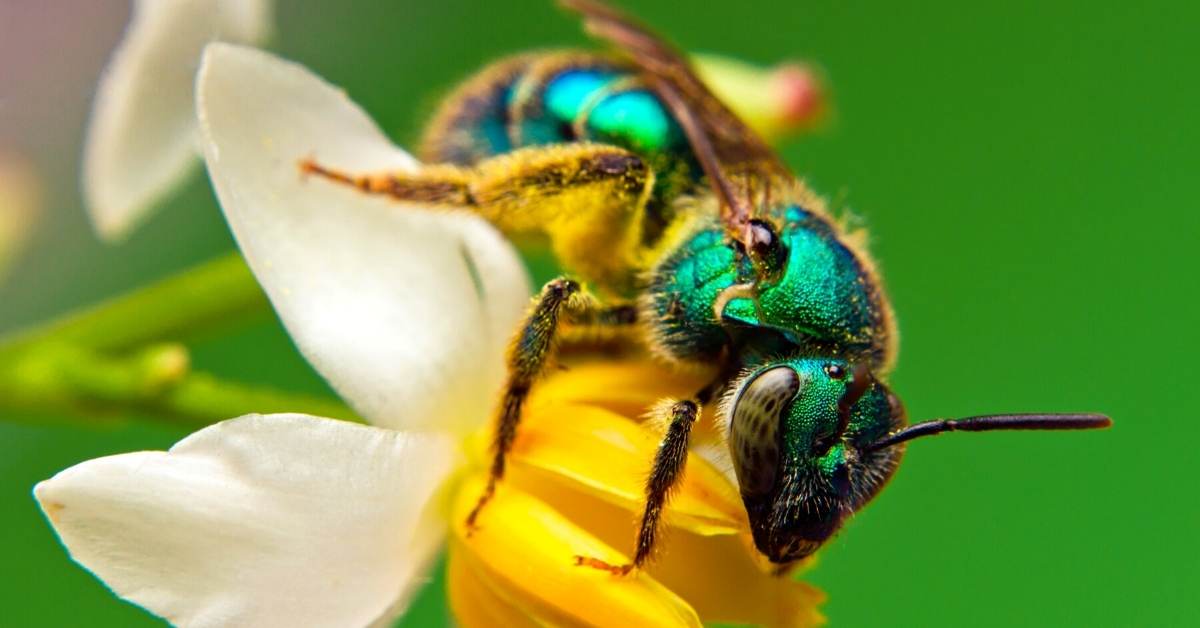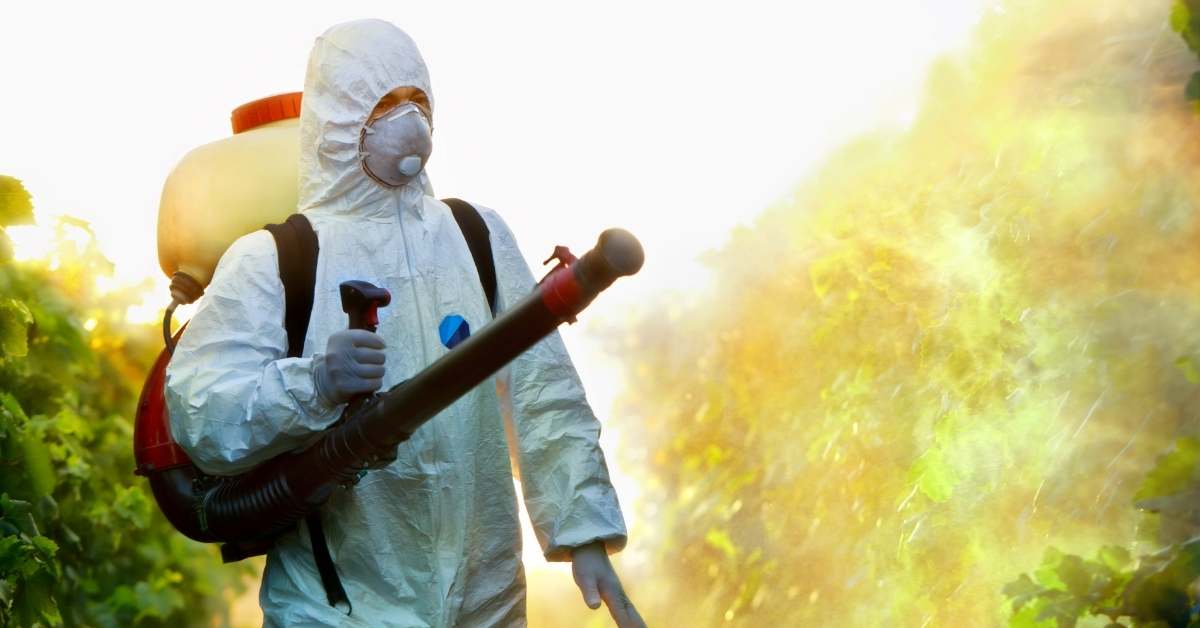Sweat bees are not dangerous, but they are a painful nuisance. These tiny winged creatures got their name because they are attracted by the salt in human sweat and enjoy stinging a sweaty gardener who is tending to outdoor plants. Keep reading to find out how to get rid of sweat bees.
Sweat bees are common but are not aggressive, don’t have life-threatening stings, and are easy to get rid of by simple do-it-yourself means. Don’t let the fear of these stinging insects prevent you from the joy of gardening, learn how to get rid of sweat bees and reclaim your outdoor growing space.
What is a Sweat Bee?
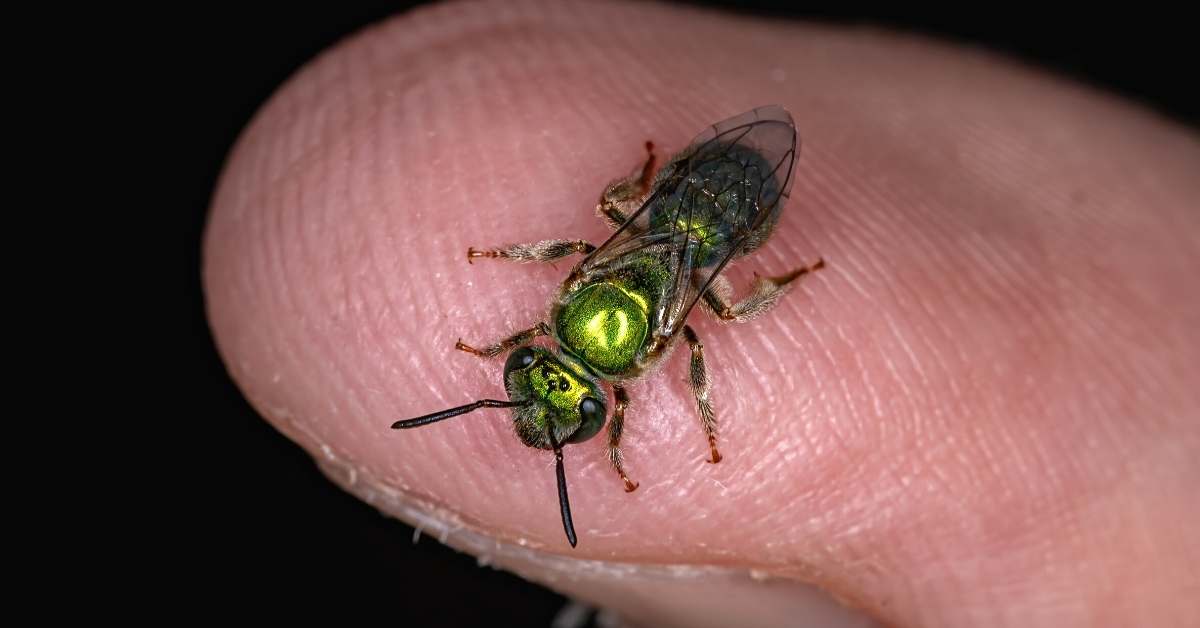
Sweat bees (aka Halictid bees, Halictidae) are smaller than other bee species and are often seen flying around vegetable and flower gardens. Their hind legs will typically be loaded with pollen as they fly back to their underground nests to store it.
Some species look like small versions of bumble or honeybees, while others look more like wasps. Some species have blue-green metallic shine on their body that almost makes them glow. All species will sting you if they feel threatened. Give these flying stingers a wide berth when you observe them in the garden, and they will typically leave you alone.
Where Do Sweat Bees Live?
Sweat bees make their home underground. They make an underground burrow in soil that has no vegetation growing on it, like around the edges of a garden or in-between plant rows. The soft soil of a freshly tilled garden plot makes it easy for the small insects to dig out the soil and create an underground home.
Only a small entry/exit hole will be visible above the ground, with a small mound of soil beside the hole. You will have to search diligently to locate the hole since the hole will be small and camouflaged by a fallen leaf or garden mulch.
Observing the hole for a few minutes to see if sweat bees are coming in and going out will let you know if the underground burrow is an active home or an abandoned one.
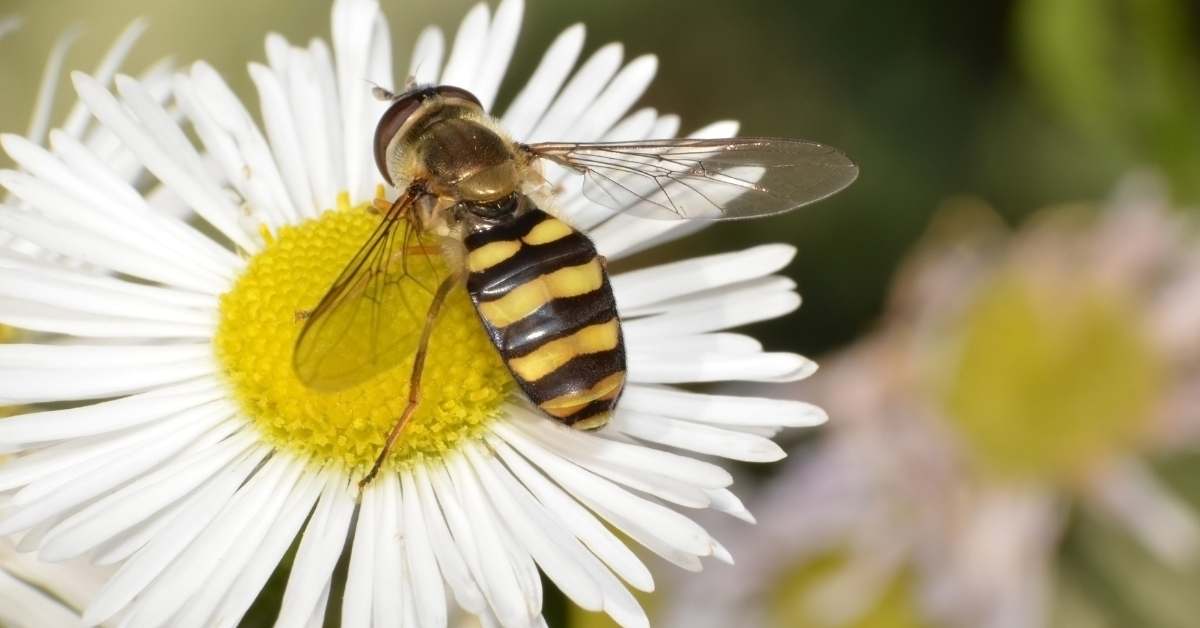
Important Pollinators
A few of these underground burrows pose no threat to humans and should be left alone. Sweat bees spend their life pollinating vegetation and help garden plants bear to produce.
Blooming plants produce flowers, so the flying stingers do provide a valuable service for the gardener. However, large colonies of these underground burrows will need to be downsized, or else the sweat bees will become defensive and attack anyone who comes into their perceived territory.
How to get rid of sweat bees?
Call a Local Bee Keeper
Since sweat bees are essential pollinators, call a local beekeeper before destroying large colonies of them that have set up a homestead in your garden. A beekeeper can remove the bees and relocate them without killing the bees.
The population of natural pollinators has dwindled over the past few years, and killing all the sweat bees we encounter would negatively impact the ecosystem. Let a beekeeper do it or use this simple method to downsize their colonies yourself.
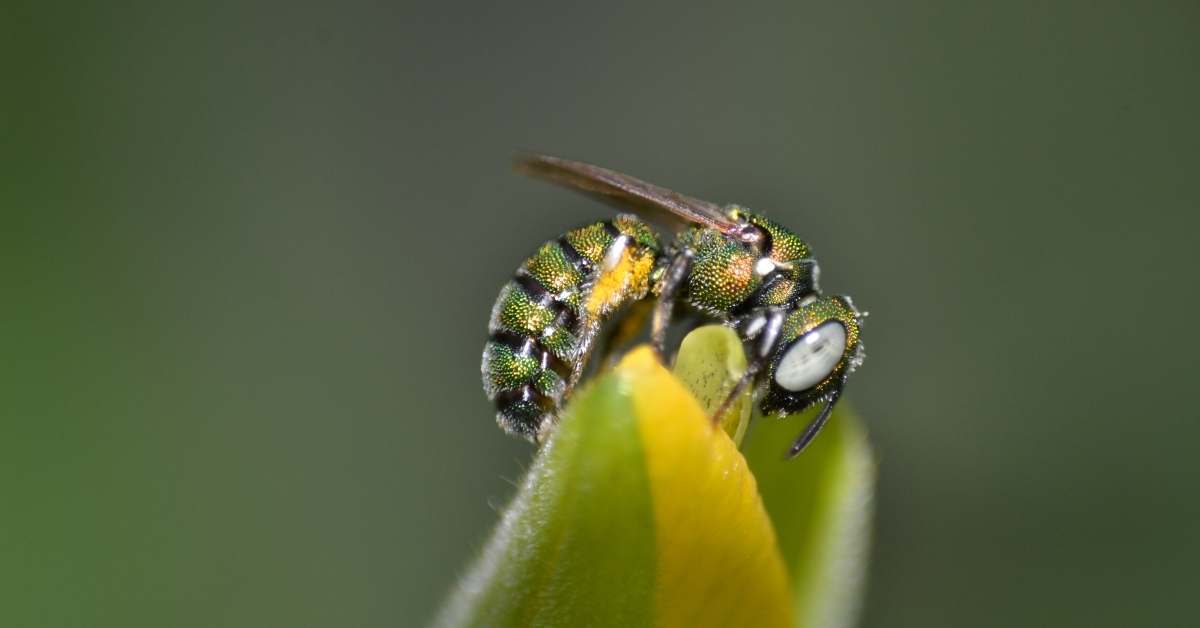
Fill the Holes to keep them away
If you don’t want to call a local beekeeper to take care of the over-population of sweat bees in your garden, wait until nightfall and put on your work boots so you can take the DIY approach.
Locate and mark the nests during the daytime so they will be easy to find after dark. Don’t get too close to the nests, as that will agitate the sweat bees inside and might get you stung.
Find some way to mark the nests so they will be easy to find after dark. Toss a brightly painted rock or similar object near the nest or use spray paint to create an arrow on the ground pointing towards the nest.
Sweat bees come home to sleep at night, so wait until well after sunset to fill in the holes, and you’ll be killing the maximum amount possible: Don long pants, long sleeves, and boots for your own protection. The bees are asleep but can awaken at any time from your footsteps vibrating the ground and go on a stinging rampage.
Take a shovel to the marked holes and quickly fill in the holes, tapping down the soil so the bees won’t be able to dig their way out. Remember to leave one or two in-ground nests because of the pollinating work these little insects do for you. Leave a nest (or two) that is the farthest away from your garden.
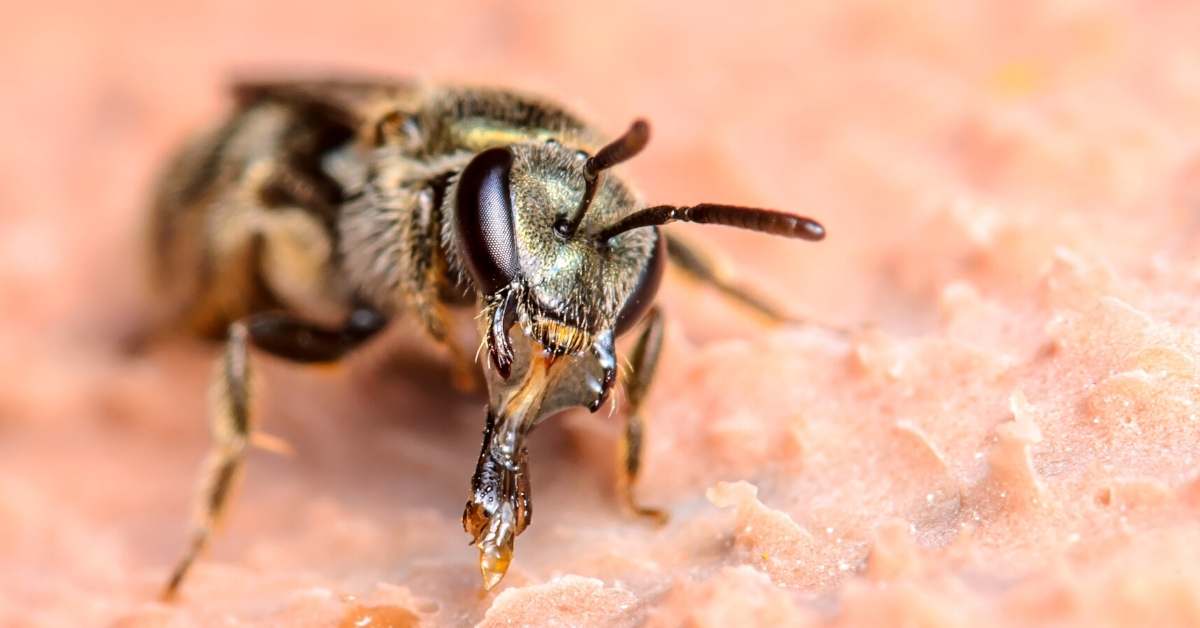
Using Pesticides to kill Sweat Bees
Sweat bees can be killed with the use of a pesticide, such as powdered carbaryl or liquid malathion. However, both poisons have their drawbacks; carbaryl is toxic to humans, and malathion is toxic to aquatic life. Wear protective clothing and follow usage instructions carefully if you choose to use a pesticide product for getting rid of sweat bees.
Whichever method is chosen, check back on the in-ground nests in two days to ensure there is no activity. If activity is observed, repeat the killing method the second time. When all activity has ceased, plant something over top of the sites or cover the area with a 6-inch layer of compost.
Cover the soil with plants
Since sweat bees only build their underground homes in soft, barren soil, the best deterrent is to plant something. Use these once-empty spaces in the garden or around the garden perimeter to grow plants that will deter pests naturally and/or improve soil structure.
Marigolds deter several garden pests, such as nematodes and beetles, and turn real estate for sweat bees into healthy garden soil.
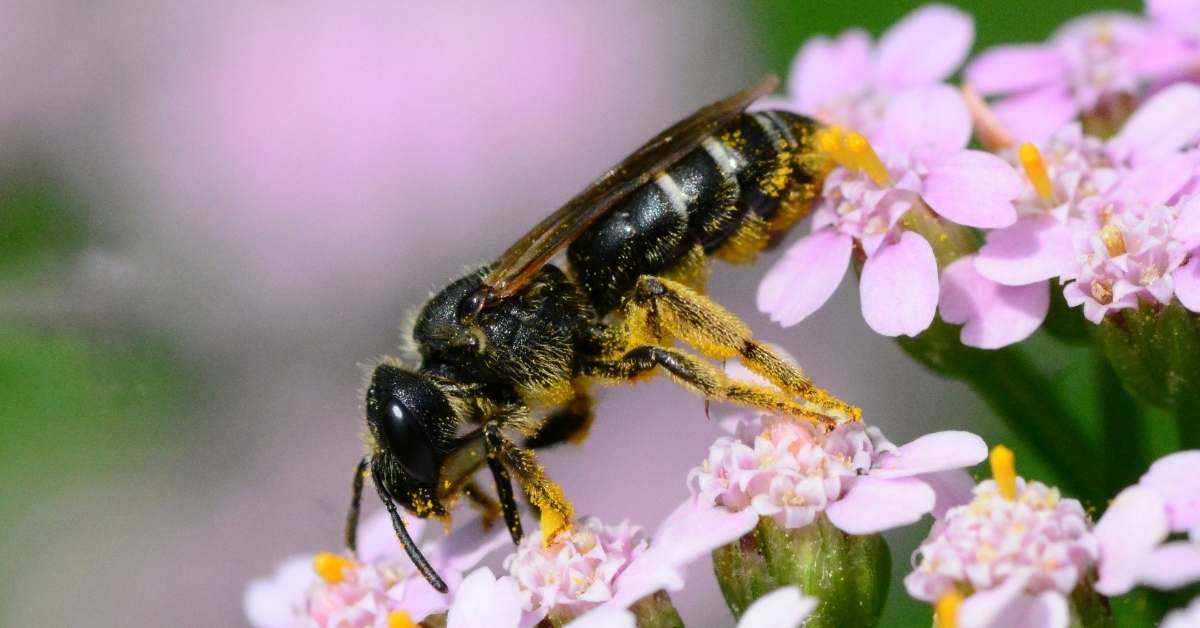
If It Goes Wrong, Seek Medical Attention
Only the female sweat bee stings, but the stinger continues to pump venom into your skin until the stinger is pulled out. Remove the stinger ASAP and apply ice to the area to reduce swelling. The sting is not as painful as other species of bees, but it does hurt and can be potentially harmful if the person has an allergy.
Seek medical attention if you receive multiple stings, if the stings are on the face, head, or neck or if you have a known allergy to bee stings.
